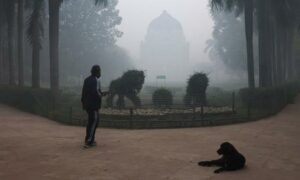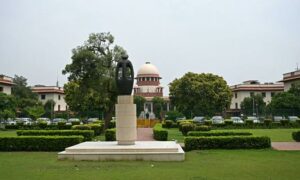
Writing Between Languages is a book about Indian authors from different regions of India, who not only write in French but also translate and write between French and Indian languages in various ways. When we think about Indian literature, we frequently think about English and Indian language literatures. But a small number of Indians have, and continue to write in French for various reasons, and I wanted to cast light on and explore that oft-neglected aspect of Indian literature in this book. In my research, I also discovered that a number of Indian writers have written literatures in Indian languages that has been heavily shaped by French literatures, which means that some Indian literary works are more French than we might think, and I explore this in detail. So the book is also about Indo-French literary exchange, and it demonstrates that several Indian writers have long been passionate about French literature, language and culture.
I’ve analysed the work of five writers in this book. Firstly, I look at the work of Ari Gautier, originally from Pondicherry, who writes fiction in French. I’ve recently translated one of his novels into English (Lakshmi’s Secret Diary, Columbia University Press 2024) and I cast light on my translation process in the book, too. I then analyse the work of M Mukundan, who is originally from the former French region of Mahé, Kerala, and who is primarily known as a Malayalam writer, but has self-translated some of his Malayalam works into French, and whose Malayalam writing was inspired by certain French writers. I have also examined the work of Manohar Rai Sardessai, a Goan writer who wrote in Konkani and in French and translated between these languages. Also studied in the book is the work of Toru Dutt from Calcutta, who wrote in French in the 19th century, and Shumona Sinha, an award-winning and prolific writer of French literatures, who is originally from Calcutta, but now lives in France.
I’ll say a little more here about the Goan writer, translator and academic Professor Manohar Rai Sardessai, 1925–2006, as it is his birth centenary this year. He was an extraordinary, prolific and talented writer and translator, whom I greatly admire. He fought for Goa’s freedom from the Portuguese colonial rule, and was an award-winning Konkani writer who won the Sahitya Akademi Prize for Konkani poetry. However, he was also very passionate about the French language, literature and culture. He completed his doctorate in France and became a French poet, writer, and academic, and translated many French works into Konkani. He was awarded the French Chevalier de l’Ordre des Palmes Académiques.
I’ve translated his French novella, The First Monsoon (La Première Pluie), into English in the appendix of my book. It’s a beautiful, tragic and moving tale about marriage, superstition, life in rural Goa and the life of miners. This literary work received an accolade in France; it was selected for broadcast on Radio France. With my English translation, I wanted to bring it to a wider readership to showcase the sheer talent of Sardessai.
One thing that struck me as I was researching the corpus was that all the multilingual writers examined in the book have engaged in processes of translation in some way or another, either through the process of “transcreation” (a concept which I discuss in detail in the book), through self-translation, or through translation between French and Indian languages, thereby creating bridges between France and India. Their writing is also multilingual, which manifests itself in different ways. Their works open up new ways of thinking about translation and multilingualism, which is a main focus of Writing Between Languages.
Sheela Mahadevan, Lecturer in French and Francophone Studies at the University of Liverpool, UK, provides an insight into her new book Writing Between Languages: Translation and Multilingualism in Indian Francophone Writing (Bloomsbury, 2025).
📰 Crime Today News is proudly sponsored by DRYFRUIT & CO – A Brand by eFabby Global LLC
Design & Developed by Yes Mom Hosting






